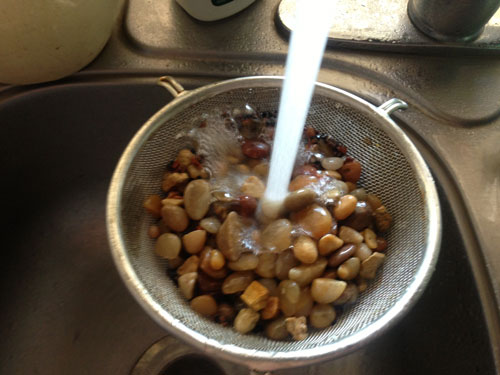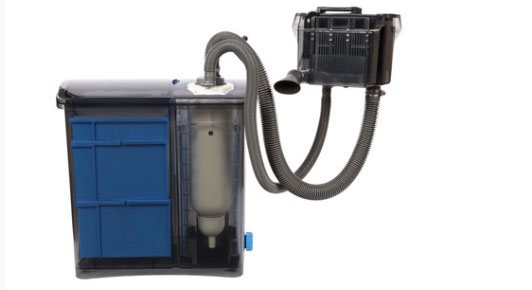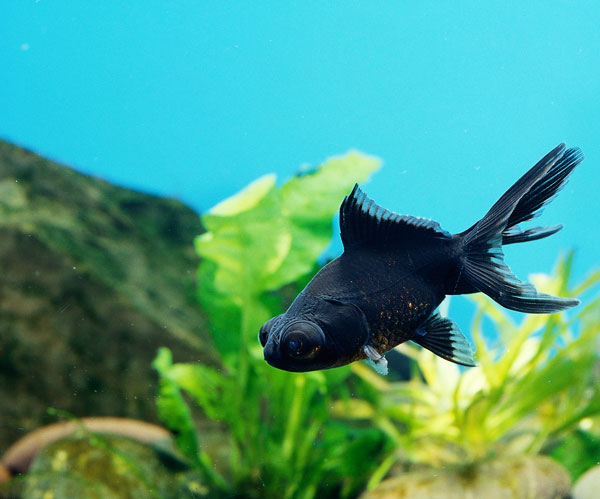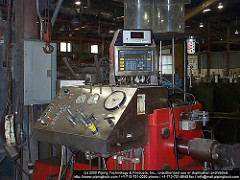
Q. I live in an apartment and just recently set up a 30-gallon goldfish aquarium. The aquarium is filtered and aerated, but is unheated. I have a similar 10-gallon aquarium. Right now I have two comet goldfish in each of the aquariums. They are active and healthy and seem to like the setups.
But now I have run into a problem. The management of the apartments where I live insists on spraying for insects. The spray from the professional exterminator is very strong, and I am afraid it will kill my fish.
What should I do to protect my aquariums from being poisoned and killing my fish? I subscribe to your magazine and have picked up a lot of useful information. Now I can use some helpful suggestions myself.
A. You have good reason to be concerned. Indoor pesticide applications do pose a potential hazard to aquariums, just as outdoor spraying threatens fish ponds, and natural ponds and streams.
There are two basic strategies you can follow to protect your fish. Certainly the most effective action is to remove the fish from the premises during the actual spraying. This period can be anywhere from a few hours to several days depending on the nature of the infestation and treatment.
First and foremost, dust and vacuum your apartment thoroughly. No, I am not obsessed with cleanliness, nor are we concerned about what the exterminator thinks of your housekeeping skills. There's a good reason to do this.
Many pesticides adhere to dust particles. With normal activity in the apartment, open windows and so on, pesticide-laden dust can become airborne inside the house and wind up in the aquarium days later. A good cleaning will limit this hazard.
Next you should turn off the aquarium filter and any aeration, and seal the top of the aquarium with a heavy plastic drop cloth and duct tape. The aquarium filter and the air pump and air tubing should be removed to a safe location or stored in a sealed plastic bag. In order to keep the filter biologically active — all aquarium filters are biologically active regardless of design — I suggest you keep the appropriate parts of the filter submerged in aquarium water when stored.
Once the building is safe for people and animals to return, you can bring the fish home, change the water, reinstall the aeration and filter, install fresh activated carbon in the filter and put the comets back in.
Although this is the safest approach for protecting the fish from accidental exposure to the pesticide, it poses its own significant hazards. Removing the fish from their home aquarium and relocating them runs the risk of injury during transport and will likely create stress from the entire operation. One must then be careful to match water quality parameters between the home aquarium and the temporary holding aquarium, then again between the temporary holding aquarium and the home aquarium after the water change.
If the application and evacuation period is something like a few hours to one full day, you can simply seal up the aquarium with the fish in residence. First start with a good dusting and vacuuming of the entire place in order to limit post-application contamination.
Next do a 50-percent water change. After the water change you should remove half the water so that the air space inside the aquarium above the waterline is equal to the volume of water. This will provide enough dissolved oxygen for the animals to last more than a day.
Now add some ammonia neutralizer, such as Amquel, as directed on the label to control ammonia buildup in the aquarium. Having turned off the aquarium filter and aeration, remove the aquarium filter, air pump and air tubing to a safe location or store them in a sealed plastic bag. Again, the filter should be stored in aquarium water to maintain biological activity.
Seal the aquarium with a heavy plastic drop cloth and duct tape. The aquarium is ready and as protected as it can be.
When it is safe to return to the apartment, carefully unseal the aquarium. Add fresh water to return theaquarium to its full volume (and add a chlorine neutralizer if necessary). Reinstall the filter and aeration. Place fresh activated carbon in the filter.
Some readers might object that they have too many fish in their aquariums to follow this procedure. The assumption is that turning off the filter and aeration for even two hours will cause ammonia levels to jump, oxygen levels to fall, and the fish will start sucking air at the surface in distress. If this is the case, there are too many fish (or fish that are too big) in too small an aquarium. They would not even survive a power outage of more than a couple of hours.
As an example, let's say the two comets total 50 grams of fish mass. Assume the aquarium water stays around 70 degrees Fahrenheit with a pH above 7.0. Furthermore, let's imagine that the owner overfeeds his goldfish, as most hobbyists do. We can estimate that 50 grams of fish fed about 3 percent of their body weight daily will produce about 38 milligrams of ammonia per day (this is roughly 25 milligrams of ammonia for every gram of fish food).
Because the 30-gallon aquarium will hold about 100 liters of water, this means that 0.38 parts per million of ammonia will be added to the aquarium daily. This is tolerable by the fish for a day.
But if there were six fish of comparable size in the aquarium, the load would be 150 grams and the ammonia concentration would rise by more than 1 part per million per day. Not good.
So, the aquarium has a fish load that gives him a lot of room for easy management. This is why my recommended procedure will work.
 Useful Idea For Stronger Nutrition And Wellness
It truly does show when you take time to create a proper no
Useful Idea For Stronger Nutrition And Wellness
It truly does show when you take time to create a proper no
 How to Get Rid of Cloudy Aquarium Water
Occasional cloudy water is an issue for nearly all aquarists
How to Get Rid of Cloudy Aquarium Water
Occasional cloudy water is an issue for nearly all aquarists
 Aquarium Filtration Done Right
Today, keeping unique aquatic species is now commonplace tha
Aquarium Filtration Done Right
Today, keeping unique aquatic species is now commonplace tha
 Fish and Fungus
Black Moor Q. I have two large black moor goldfish, one larg
Fish and Fungus
Black Moor Q. I have two large black moor goldfish, one larg
 Would You Like The Supreme Fishing Experience? Heres The Reason Why It Is Essential To Carry The Mo
If what youre seeking out is considerably more fish thr
Would You Like The Supreme Fishing Experience? Heres The Reason Why It Is Essential To Carry The Mo
If what youre seeking out is considerably more fish thr
Copyright © 2005-2016 Pet Information All Rights Reserved
Contact us: www162date@outlook.com